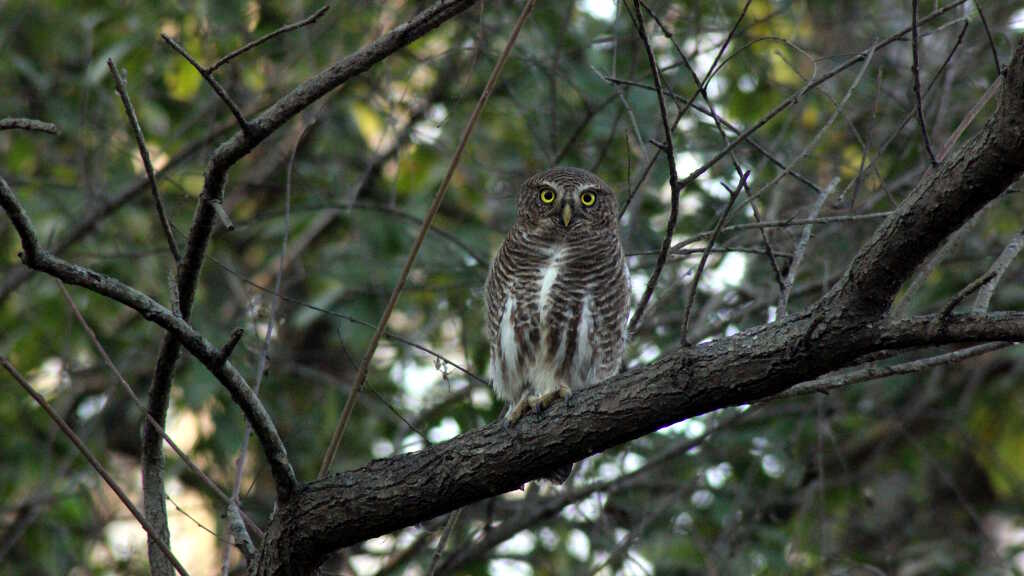
Glaucidium cuculoides (Asian Barred Owlet)
The Asian Barred Owlet (Glaucidium cuculoides) is a fascinating bird species found in the forests of the Great Himalayan National Park (GHNP). This small yet bold owl is known for its distinctive call, barred plumage, and daytime activity, which sets it apart from other owls. Its presence in GHNP reflects the richness of the park’s avian diversity and the health of its forest ecosystems.
Physical Features and Behavior
The Asian Barred Owlet is easily recognizable by its finely barred brown-and-white feathers, round head, and piercing yellow eyes. Measuring around 20–25 cm in length, it is a relatively small owl but remarkably vocal and fearless. Unlike many owl species, this owlet is often seen during daylight hours, perched on open branches or wires, surveying its surroundings for prey.
Habitat in the Great Himalayan National Park
In GHNP, the Asian Barred Owlet thrives in temperate and subtropical forests, preferring areas with dense canopy and nearby open clearings. These habitats offer the perfect blend of cover and hunting grounds for the bird, which preys on insects, small rodents, and birds.
Its adaptability allows it to occupy a range of elevations in the park, from lowland forests to mid-mountain zones, making it a common sight for birdwatchers exploring GHNP.
| Common name | Asian-barred Owlet |
| Scientific name | Glaucidium cuculoides |
| Family | Tytonidae |
| Description | Small and heavily barred. Buff baring on wing-coverts and flight feathers, and streaked flanks. Call is a continuous bubbling whistle. Resident in Himalayas and usually found in tropical, subtropical, and temperate forest. (2100m) |
Ecological Role and Importance
The Asian Barred Owlet plays a critical role in pest control within GHNP by feeding on insects and small vertebrates. As a mid-level predator, it helps maintain the natural balance in the forest food web. Its presence also indicates a well-preserved habitat, making it an important bioindicator species.
Cultural and Conservation Relevance
Owls hold cultural significance in many Himalayan communities, sometimes symbolizing wisdom and mystery. In terms of conservation, while the Asian Barred Owlet is currently listed as Least Concern, continued preservation of forest habitats in GHNP is essential to ensure its survival.
Conclusion
The Asian Barred Owlet is more than just a small forest owl—it’s a vital part of the Great Himalayan National Park’s ecosystem. Its unique behavior, role in biodiversity, and striking appearance make it a species worth observing and protecting. Through continued conservation efforts in GHNP, this woodland sentinel can continue to thrive in its natural Himalayan home.



